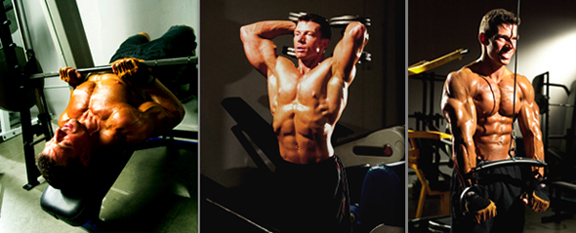Maximizing Muscle Growth: The Science Behind Exercise Order
Introduction to Training Efficiency
Structuring a workout session can significantly amplify your results, optimizing muscle gain. Many bodybuilders do not follow a strategic sequence during their exercises, which can decrease the effectiveness of the workout due to the variability of the intensity applied. This article proposes a method to organize your exercise routine that maximizes muscle stimulation, based on scientific concepts of muscle activation and tension.
Initial Preparation: Connecting Mind and Muscle
Before starting heavy lifting, it is crucial to prepare the muscles through a “connection phase.” This pre-exercise period serves to “teach” your brain to activate the target muscle, enhancing the efficiency of the subsequent workout. For example, if the focus is on the back and you often feel the arms working more, dedicating time to consciously activate the back can redirect the energy and maximize the force applied where it truly matters.
First Exercise: Establishing the Foundation
After neural activation, the first exercise should focus on working the muscle at a medium extension. Avoid starting with movements that require the muscle to be fully contracted or fully extended, as this can lead to “muscular insufficiency,” where the muscle is not capable of generating maximum force. Opt for exercises that allow an intense load at a medium fiber length, like the bicep curl, which creates an ideal mechanical tension for initiating hypertrophy.
Progressing Through Exercises: From Tension to Damage
Continue your session with exercises that vary the muscle length. Include movements that initially shorten the muscle, intensifying the tension, and later those that maximize stretching. This variation is crucial for causing micro-tears in the muscle fibers, a necessary precursor for muscle growth. Movements like the machine fly are excellent for achieving a high degree of stretch.
Concluding with Intensity: Maximizing the Stimulus
The conclusion of the workout should be no less strategic. Choose exercises that intensely stretch the muscle, like the deadlift for the hamstrings. This type of exercise not only causes significant tissue damage, essential for hypertrophy, but also prepares the muscle for robust recovery.
Post-Workout Stretching Cautions
While stretching is beneficial, it is vital to do it cautiously. Stretching an extremely tense muscle can turn beneficial micro-tears into severe injuries, such as strains. Therefore, moderate the intensity and duration of stretching after the workout to avoid setbacks.
Series Quantity per Exercise
The number of sets performed in each exercise is a crucial factor that complements the exercise order. Ideally, varying the number of series according to the intensity and type of exercise can help maximize the muscle stimulus, without leading to premature exhaustion.
Conclusion: Integrating Science into Your Training
Following a logical and scientifically based sequence of exercises not only maximizes aesthetic and strength results but also minimizes the risk of injuries. Each phase of the workout prepares the muscle for the next, creating a cycle of stimulation that ensures the best utilization of the training session.
Call to Action
If you are looking to maximize your results and optimize the time spent in the gym, considering the order of exercises is a fundamental step. Do not hesitate to try this methodology and observe how your body responds to organized and intensified stimulus.
These are guidelines based on advanced exercise physiology concepts that can transform the quality of your workouts and accelerate your progress. Apply consciously and adjust according to your body’s response to achieve the utmost in muscle growth.


